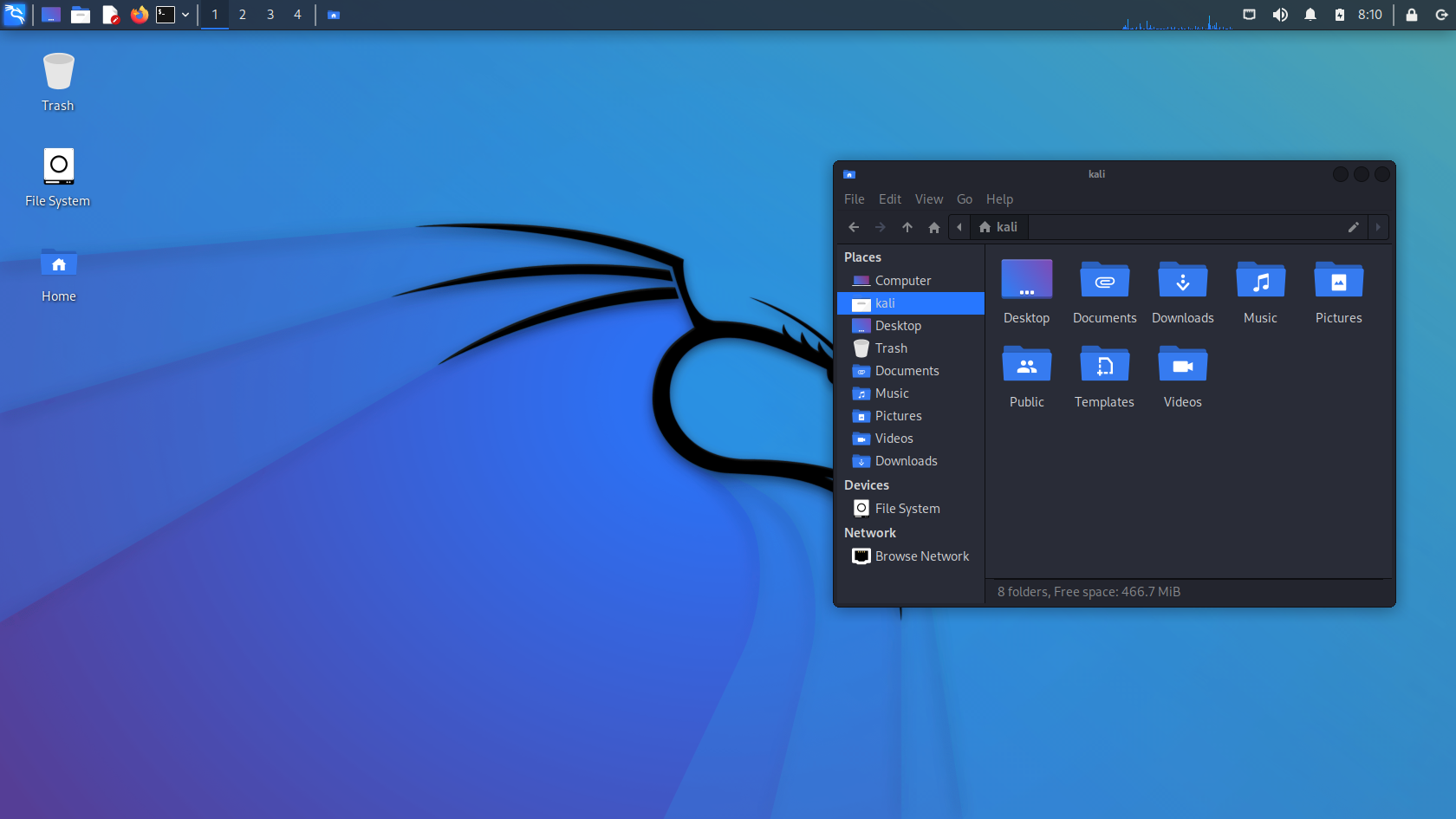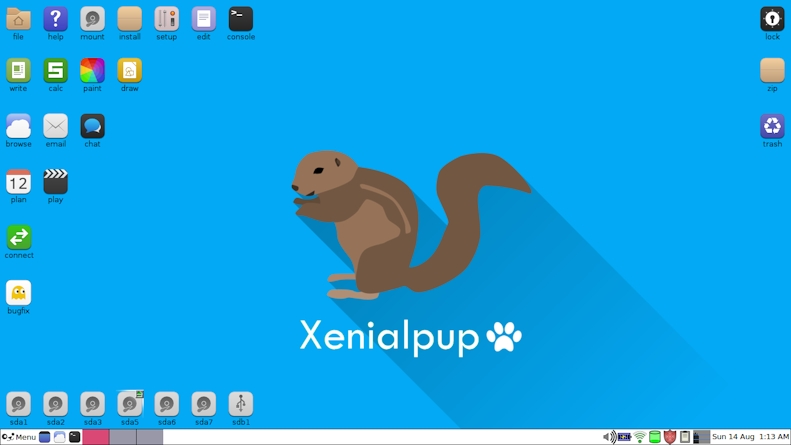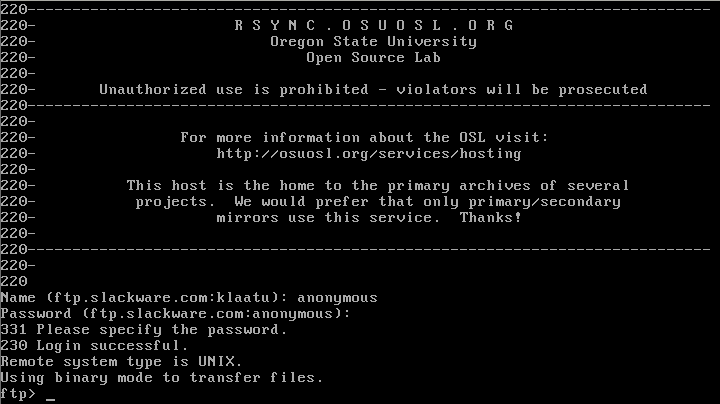|
BackTrack
BackTrack was a Linux distribution that focused on security, based on the Knoppix Linux distribution aimed at digital forensics and penetration testing use. In March 2013, the Offensive Security team rebuilt BackTrack around the Debian distribution and released it under the name Kali Linux. History The BackTrack distribution originated from the merger of two formerly competing distributions which focused on penetration testing: * ''WHAX'': a Slax-based Linux distribution developed by Mati Aharoni, a security consultant. Earlier versions of WHAX were called ''Whoppix'' and were based on Knoppix. * ''Auditor Security Collection'': a Live CD based on Knoppix developed by ''Max Moser'' which included over 300 tools organized in a user-friendly hierarchy. On January 9, 2010, BackTrack 4 improved hardware support, and added official FluxBox support. The overlap with Auditor and WHAX in purpose and in collection of tools partly led to the merger. The overlap came about as Backtrack ... [...More Info...] [...Related Items...] OR: [Wikipedia] [Google] [Baidu] [Amazon] |
|
|
Offensive Security
Offensive Security (also known as OffSec) is an American international company working in information security, penetration testing and digital forensics. Beginning around 2007, the company created open source projects, advanced security courses, the ExploitDB vulnerability database, and the Kali Linux distribution. OffSec was started by Mati Aharoni, and employs security professionals with experience in security penetration testing and system security evaluation. The company has provided security counseling and training to many technology companies. OffSec also provides cybersecurity training courses and certifications, such as the Offensive Security Certified Professional (OSCP). Background and history Mati Aharoni, Offensive Security's co-founder, started the business around 2006 with his wife Iris. Offensive Security LLC was formed in 2008. In September 2019 the company received its first venture capital investment, from Spectrum Equity, and CEO Ning Wang replaced Joe St ... [...More Info...] [...Related Items...] OR: [Wikipedia] [Google] [Baidu] [Amazon] |
|
 |
Kali Linux
Kali Linux is a Linux distribution designed for digital forensics and penetration testing. It is maintained and funded by Offensive Security. The software is based on the Debian''Testing'' branch: most packages Kali uses are imported from the Debian Software repository, repositories. The tagline of Kali Linux and BackTrack is "The quieter you become, the more you are able to hear", which is displayed on some backgrounds, see :File:Kali Linux Desktop.png, this example. Kali Linux has gained immense popularity in the cybersecurity community due to its comprehensive set of tools designed for penetration testing, vulnerability analysis, and reverse engineering. Kali Linux has approximately 600 penetration-testing programs (tools), including Armitage (computing), Armitage (a graphical cyber attack management tool), Nmap (a port scanner), Wireshark (a packet analyzer), metasploit (penetration testing framework), John the Ripper (a password cracker), sqlmap (automatic SQL injection and ... [...More Info...] [...Related Items...] OR: [Wikipedia] [Google] [Baidu] [Amazon] |
 |
Ubuntu
Ubuntu ( ) is a Linux distribution based on Debian and composed primarily of free and open-source software. Developed by the British company Canonical (company), Canonical and a community of contributors under a Meritocracy, meritocratic governance model, Ubuntu is released in multiple official editions: ''Desktop computer, Desktop'', ''Server (computing), Server'', and ''Core'' for Internet of things, IoT and robotic devices. Ubuntu is published on a six-month release cycle, with long-term support (LTS) versions issued every two years. Canonical provides security updates and support until each release reaches its designated end-of-life (product), end-of-life (EOL), with optional extended support available through the Ubuntu Pro and Expanded Security Maintenance (ESM) services. , the latest stable release is Ubuntu version history#Ubuntu 25.04 (Plucky Puffin), 25.04 ("Plucky Puffin"), and the current LTS release is Ubuntu version history#Ubuntu 24.04 LTS (Noble Numbat), 24.04 ( ... [...More Info...] [...Related Items...] OR: [Wikipedia] [Google] [Baidu] [Amazon] |
|
Aircrack-ng
Aircrack-ng is a network software suite consisting of a detector, packet sniffer, WEP and WPA/ WPA2-PSK cracker and analysis tool for 802.11 wireless LANs. It works with any wireless network interface controller whose driver supports raw monitoring mode and can sniff 802.11a, 802.11b and 802.11g traffic. Packages are released for Linux and Windows. Aircrack-ng is a fork of the original Aircrack project. It can be found as a preinstalled tool in many security-focused Linux distributions such as Kali Linux or Parrot Security OS, which share common attributes, as they are developed under the same project (Debian). Development Aircrack was originally developed by French security researcher Christophe Devine. Its main goal was to recover 802.11 wireless networks WEP keys using an implementation of the Fluhrer, Mantin and Shamir (FMS) attack alongside the ones shared by a hacker named KoreK. Aircrack was forked by Thomas D'Otreppe in February 2006 and released as Airc ... [...More Info...] [...Related Items...] OR: [Wikipedia] [Google] [Baidu] [Amazon] |
|
|
Packet Injection
Packet injection (also known as forging packets or spoofing packets) in computer networking, is the process of interfering with an established network connection by means of constructing packets to appear as if they are part of the normal communication stream. The packet injection process allows an unknown third party to disrupt or intercept packets from the consenting parties that are communicating, which can lead to degradation or blockage of users' ability to utilize certain network services or protocols. Packet injection is commonly used in man-in-the-middle attacks and denial-of-service attacks. Capabilities By utilizing raw sockets, NDIS function calls, or direct access to a network adapter kernel mode driver, arbitrary packets can be constructed and injected into a computer network. These arbitrary packets can be constructed from any type of packet protocol (ICMP, TCP, UDP, and others) since there is full control over the packet header while the packet is being assem ... [...More Info...] [...Related Items...] OR: [Wikipedia] [Google] [Baidu] [Amazon] |
|
|
Monitor Mode
Monitor mode, or RFMON (Radio Frequency MONitor) mode, allows a computer with a wireless network interface controller (WNIC) to monitor all traffic received on a wireless channel. Unlike promiscuous mode, which is also used for packet sniffing, monitor mode allows packets to be captured without having to associate with an access point or ad hoc network first. Monitor mode only applies to wireless networks, while promiscuous mode can be used on both wired and wireless networks. Monitor mode is one of the eight modes that 802.11 wireless adapter can operate in: Master (acting as an access point), Managed (client, also known as station), Ad hoc, Repeater, Mesh, Wi-Fi Direct, TDLS and Monitor mode. Uses Uses for monitor mode include: geographical packet analysis, observing of widespread traffic and acquiring knowledge of Wi-Fi technology through hands-on experience. It is especially useful for auditing unsecure channels (such as those protected with WEP). Monitor mode can ... [...More Info...] [...Related Items...] OR: [Wikipedia] [Google] [Baidu] [Amazon] |
|
|
Metasploit
The Metasploit Project is a computer security project that provides information about security vulnerabilities and aids in penetration testing and IDS signature development. It is owned by Boston, Massachusetts-based security company, Rapid7. Its best-known sub-project is the open-source Metasploit Framework, a tool for developing and executing exploit code against a remote target machine. Other important sub-projects include the Opcode Database, shellcode archive and related research. The Metasploit Project includes anti-forensic and evasion tools, some of which are built into the Metasploit Framework. In various operating systems it comes pre installed. History Metasploit was created by H. D. Moore in 2003 as a portable network tool using Perl. By 2007, the Metasploit Framework had been completely rewritten in Ruby. On October 21, 2009, the Metasploit Project announced that it had been acquired by Rapid7, a security company that provides unified vulnerability management ... [...More Info...] [...Related Items...] OR: [Wikipedia] [Google] [Baidu] [Amazon] |
|
|
NASA
The National Aeronautics and Space Administration (NASA ) is an independent agencies of the United States government, independent agency of the federal government of the United States, US federal government responsible for the United States's civil list of government space agencies, space program, aeronautics research and outer space, space research. National Aeronautics and Space Act, Established in 1958, it succeeded the National Advisory Committee for Aeronautics (NACA) to give the American space development effort a distinct civilian orientation, emphasizing peaceful applications in space science. It has since led most of America's space exploration programs, including Project Mercury, Project Gemini, the 1968–1972 Apollo program missions, the Skylab space station, and the Space Shuttle. Currently, NASA supports the International Space Station (ISS) along with the Commercial Crew Program and oversees the development of the Orion (spacecraft), Orion spacecraft and the Sp ... [...More Info...] [...Related Items...] OR: [Wikipedia] [Google] [Baidu] [Amazon] |
|
 |
Live USB
A live USB is a portable USB-attached external data storage device containing a full operating system that can be booted from. The term is reminiscent of USB flash drives but may encompass an external hard disk drive or solid-state drive, though they may be referred to as "live HDD" and "live SSD" respectively. They are the evolutionary next step after live CDs, but with the added benefit of writable storage, allowing customizations to the booted operating system. Live USBs can be used in embedded systems for system administration, data recovery, or test driving, and can persistently save settings and install software packages on the USB device. Many operating systems including , , Windows XP Embedded and a large portion of Linux and BSD distributions can run from a USB flash drive, and Windows 8 Enterprise has a feature titled Windows To Go for a similar purpose. Background To repair a computer with booting issues, technicians often use lightweight operating systems on bo ... [...More Info...] [...Related Items...] OR: [Wikipedia] [Google] [Baidu] [Amazon] |
|
Institute Of Electrical And Electronics Engineers
The Institute of Electrical and Electronics Engineers (IEEE) is an American 501(c)(3) public charity professional organization for electrical engineering, electronics engineering, and other related disciplines. The IEEE has a corporate office in New York City and an operations center in Piscataway, New Jersey. The IEEE was formed in 1963 as an amalgamation of the American Institute of Electrical Engineers and the Institute of Radio Engineers. History The IEEE traces its founding to 1884 and the American Institute of Electrical Engineers. In 1912, the rival Institute of Radio Engineers was formed. Although the AIEE was initially larger, the IRE attracted more students and was larger by the mid-1950s. The AIEE and IRE merged in 1963. The IEEE is headquartered in New York City, but most business is done at the IEEE Operations Center in Piscataway, New Jersey, opened in 1975. The Australian Section of the IEEE existed between 1972 and 1985, after which it split into state- ... [...More Info...] [...Related Items...] OR: [Wikipedia] [Google] [Baidu] [Amazon] |
|
 |
Slackware
Slackware is a Linux distribution created by Patrick Volkerding in 1993. Originally based on Softlanding Linux System (SLS), Slackware has been the basis for many other Linux distributions, most notably the first versions of SUSE Linux distributions, and is the oldest distribution that is still maintained. Slackware aims for design stability and simplicity and to be the most "Unix-like" Linux distribution. It makes as few modifications as possible to software packages from upstream and tries not to anticipate use cases or preclude user decisions. In contrast to most modern Linux distributions, Slackware provides no graphical installation procedure and no automatic dependency resolution of software packages. It uses plain text files and only a small set of shell scripts for configuration and administration. Without further modification it boots into a command-line interface environment. Because of its many conservative and simplistic features, Slackware is often considered to ... [...More Info...] [...Related Items...] OR: [Wikipedia] [Google] [Baidu] [Amazon] |